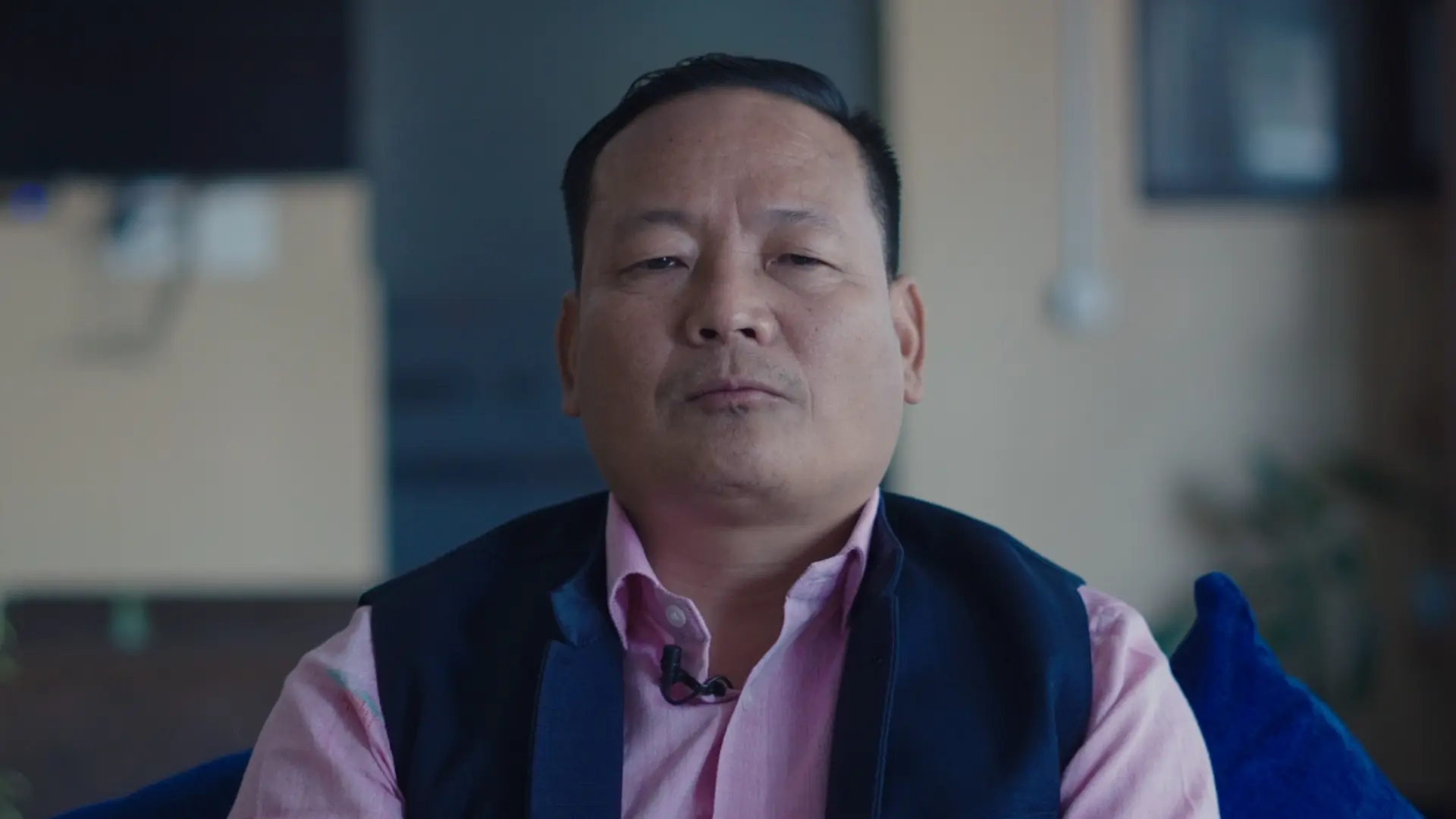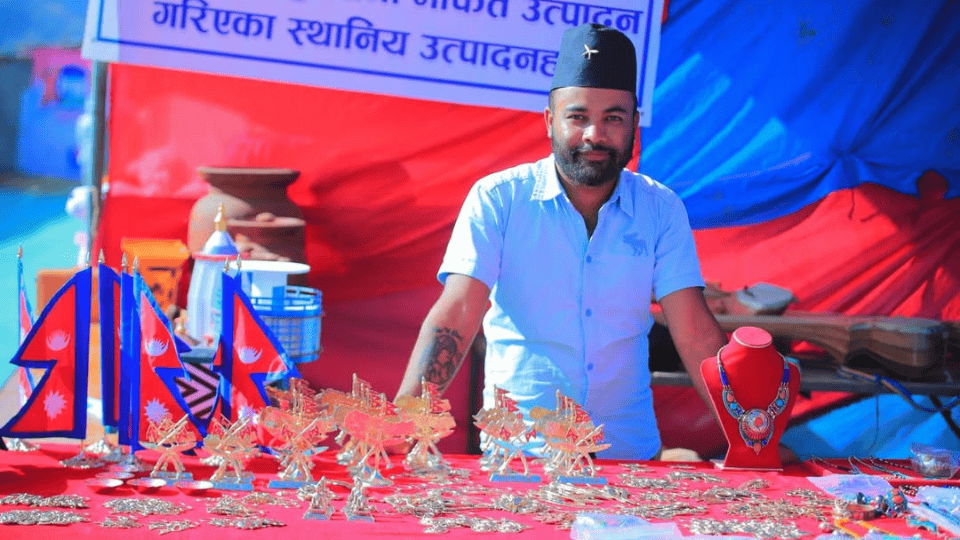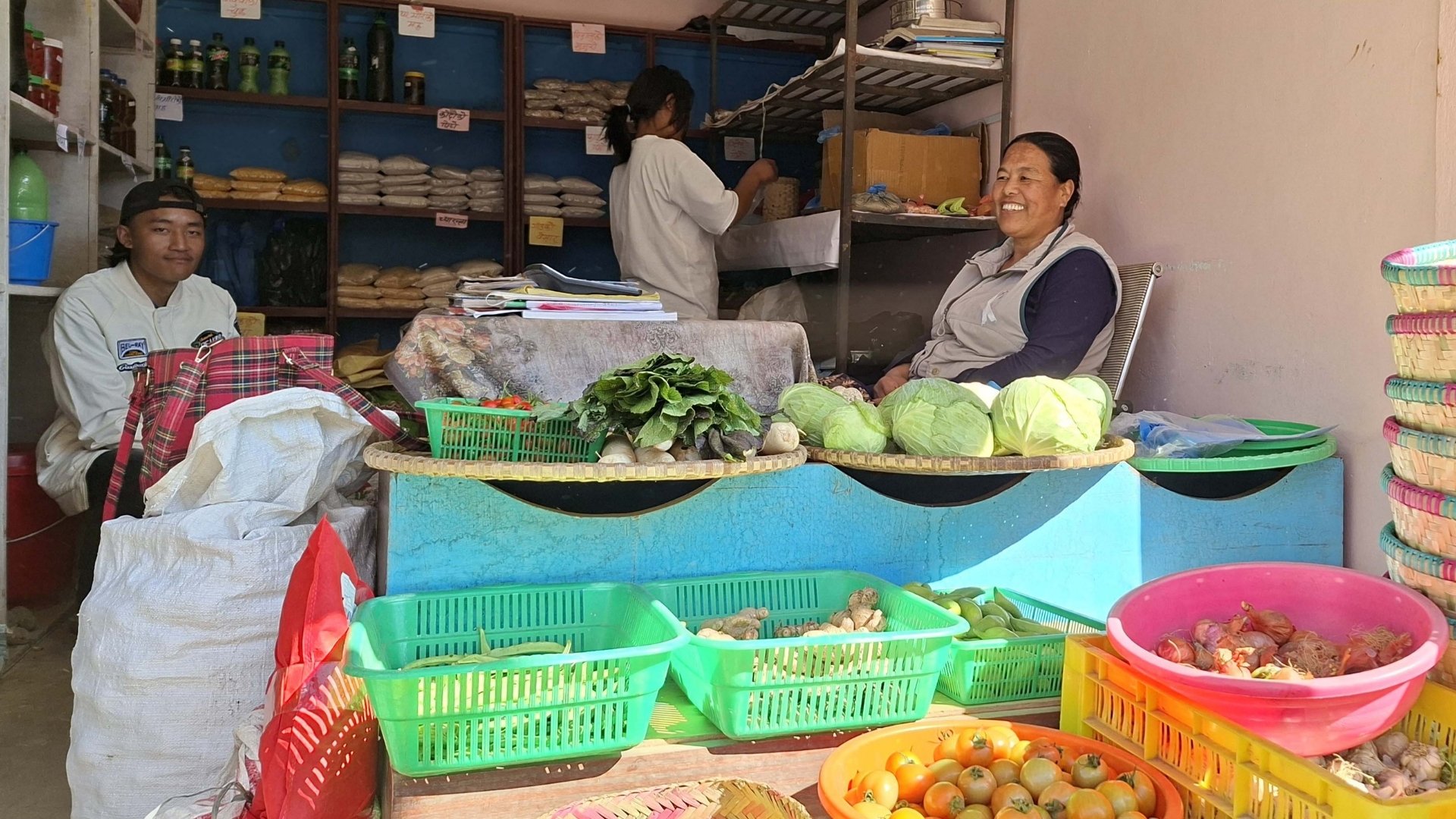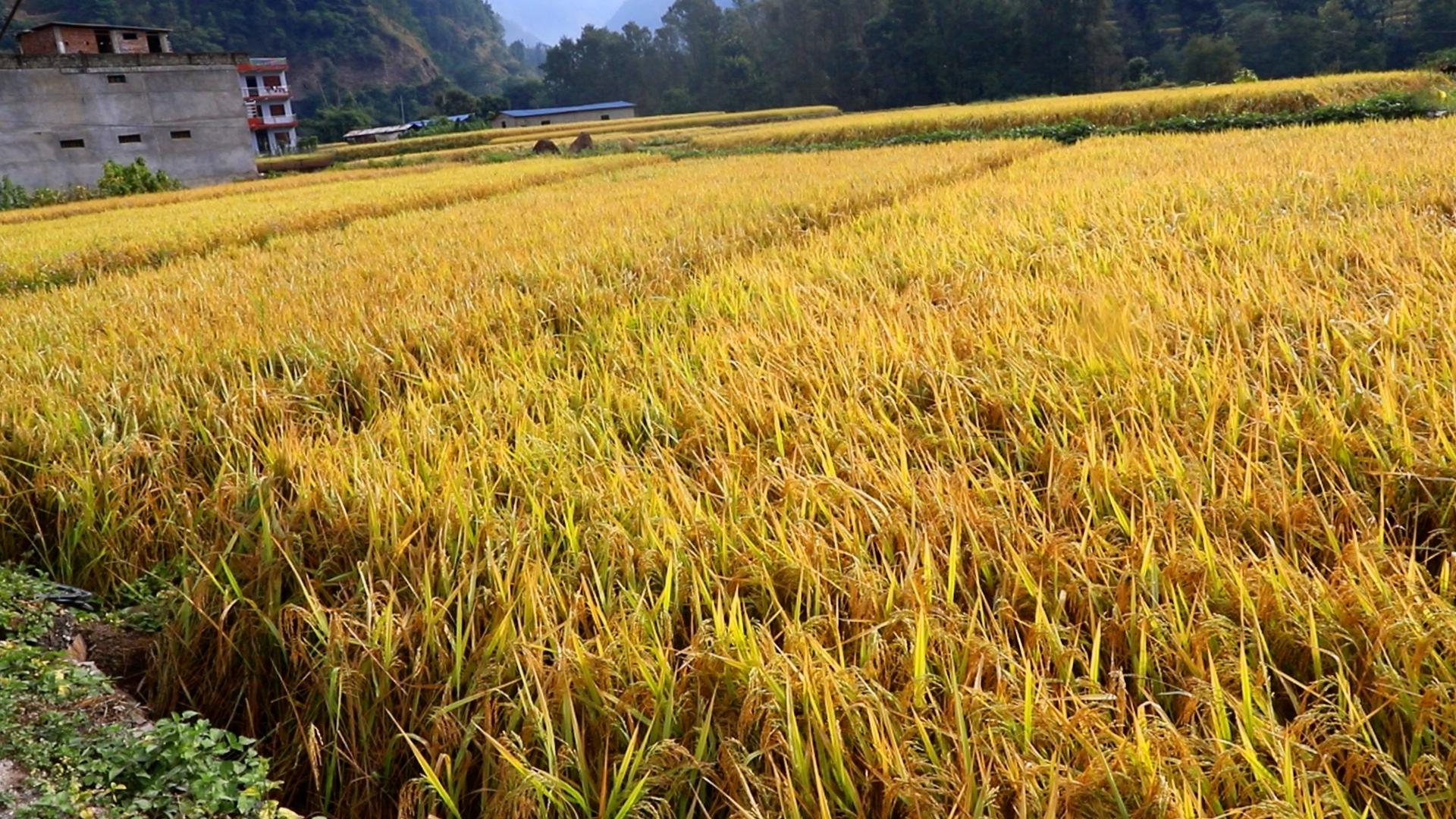Located in Taalchowk-27 of Pokhara Metropolitan City is Satyadevi Cotton Industry. Basing his business model on the principle of reusing textiles, Keshav Ranabhat started his business venture seven years ago.
Beginning his professional journey bridging commerce with agriculture, Ranabhat established Satyadevi Cotton Industry in 2018. Spread over an area of one ropani, the business currently employs 10 workers.

“I started by collecting discarded clothing from villages to make cotton,” Ranabhat recalls the beginnings of this business half a decade ago. “Now, we’ve expanded our services to Baglung, Syangja, Arghakhanchi, Gulmi, Tanahun, and Lamjung.”
Agricultural background, agriculture-related business
Looking into Ranabhat’s personal life reveals a continued connection with agriculture.
Born into an agricultural family in Lamgadi-33 of Pokhara Metropolitan City, farming has been the primary livelihood of his family. He recalls carrying baskets of bundled leafy greens to sell in the market at as young as 13 years old.
“I knew agriculture was our profession from a young age. We used to go to the market to sell our produce,” says Ranabhat. “I felt connected to agriculture even then, and now too as my current profession is also related to agriculture.”
Before starting his current venture, Ranabhat was engaged in other agriculture-related businesses. He started his business back in 2012 after purchasing a tractor and thresher.
Establishing the Cotton Business
Beginning his professional life as a farm equipment rental service provider, Ranabhat was able to take his business to new heights. By 2018, the business had three tractors and threshers each and was running successfully.
Around that time, he decided to diversify his business, leading to the establishment of the Satyadevi Cotton Industry.
Starting with local services, Ranabhat talks about having gradually expanded the business to other districts.
Business based on Reusing: Discarded clothing as raw material
According to Ranabhat, products like comforters and mattresses generally use two types of cotton.
The first kind is new cotton. Nepal’s local production is insufficient to meet its demand, and is thus imported.
The second is black cotton, which can be easily produced in the country itself.
“New cotton needs to be imported from outside Nepal,” Ranabhat explains, “but black cotton can be made from raw materials available here by reusing discarded or unused clothes.”
According to Ranabhat, he has to travel to various places for business. Oftentimes, sellers invite him to their locations from where he purchases and brings back clothes to be used as raw materials. “There are some customers who visit the factory to commission articles. We also go to buyers’ places to take the orders, and deliver the items when they’re completed”, he tells us.
Ranabhat accepts that reusing is not common practice in Nepal. Furthermore, the fast-fashion industry experiences rapid succession of styles, where there is a quick adoption and abandonment of style in a relatively short period of time. This means that these clothes do not reach the end of their wearable period, or the lifespan, when they are discarded. Even if they do, they do not reach a state where they are completely harmless to the environment. When discarded irresponsibly, they harm the environment.
According to a report by the United Nations Environment Programme (UNEP), people purchase 60% more clothing than they actually need and use it for only half its intended lifespan. In such a situation, most of these clothes ultimately contribute to environmental damage.
Through his business, Ranabhat works to reuse such discarded clothes. Satyadevi Cotton Industry’s primary source of raw material is discarded clothing that is no longer usable. It collects such clothes and processes them into cotton. The resulting cotton is used to make products such as comforters and mattresses.
“Reusing is not very popular in Nepal, which is also why more and more materials need to be imported”, he says. “Our economic condition is also not good. We make cotton from discarded clothes taken from our localities and make new uses of it.”

According to Ranabhat, factory workers go to various locations to collect clothing, while in some cases, customers themselves bring them. The collected clothes are first shredded, then put into a machine to extract the cotton from, which comes out in black and white color.
To facilitate transportation and delivery, Ranabhat has purchased two delivery vans.
“We take orders from nearby areas and deliver them,” he says. “We bring old clothes from homes in the area, shred them into cotton using machines, and use them to make comforters and mattresses as per the specifications.”
Ranabhat views his business as more than just a means of income; he considers it a form of service. He attributes his success in capturing a significant share in the market to the existence of a good market for such products and from having started his business in an organized and systematic way with a factory.
Collaboration: A key to success
Ranabhat says that his enterprise is successful.
It charges a rate of Rs. 45 per kilogram to customers who bring their own clothes to be reused and made into comforters and mattresses. If they want it made with new cotton, the rate is Rs. 250 per kilogram.
“Our daily sales stands at Rs 40,000”, informs Ranabhat, “We have a profit margin of up to 30% per article.”
He attributes the success of his cotton business to collaboration, just as it has been for his other ventures. Starting with tractors and threshers, his professional journey now encompasses the cotton industry, and agricultural supplies more recently. And for all of them, he emphasizes, collaboration to have underpinned his success.
His business efforts are based on this very formula – for success, individual efforts aren’t enough; collaboration is essential.
“As for the employees with whom I work alongside, there is the question of whether I refer to them as my workers, or as my family,” says Ranabhat. “You should not discriminate or mistreat them because they are manual laborers. They should be considered as family and treated fairly. Workers should not be exploited, but rather treated fairly.”

Ranabhat emphasizes the importance of collaboration in dealing with work-related difficulties. Nonetheless, his experiences have taught him that a business operator must consider many aspects. Currently, there is an equal number of men and women employed at Satyadevi.
“My total investment in all the businesses combined is Rs. 15 million, with Rs. 7 million in the cotton business,” he says. “The key is to sustain the business. You can’t make a lot of money at once.”
He says he got into the business only after preparing himself to accept that things don’t always go as planned. The fear of failure due to the initial difficulties. Amidst these uncertainties, he continues to persevere. Furthermore, he notes the importance of knowing what infrastructures they invest in, and how on each.
Including the ten at Satyadevi, Ranabhat has provided employment to a total of 26 people across all his business ventures. The cotton industry has become a source of income for him too.
“Although we aren’t where I anticipated due to the present economic downturn, I am nonetheless satisfied,” he says.
Yubaraj Bhattarai is a journalist who has worked in the media such as Annapurnapost, Nepallive.com, Clickmandu, etc. He is a graduate from RR Campus of Tribhuvan University in Journalism.
















